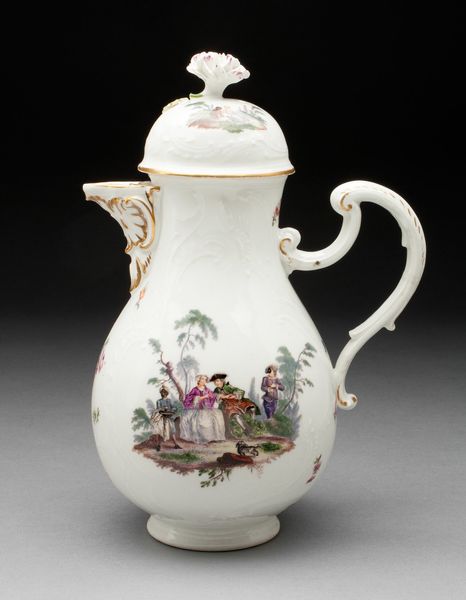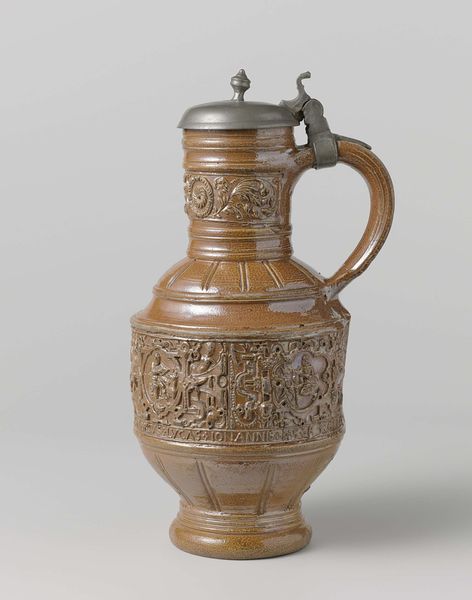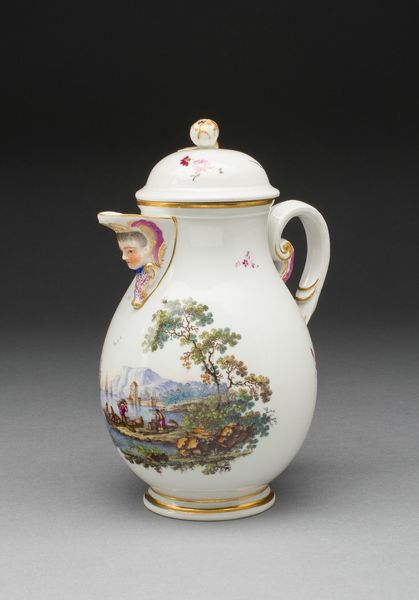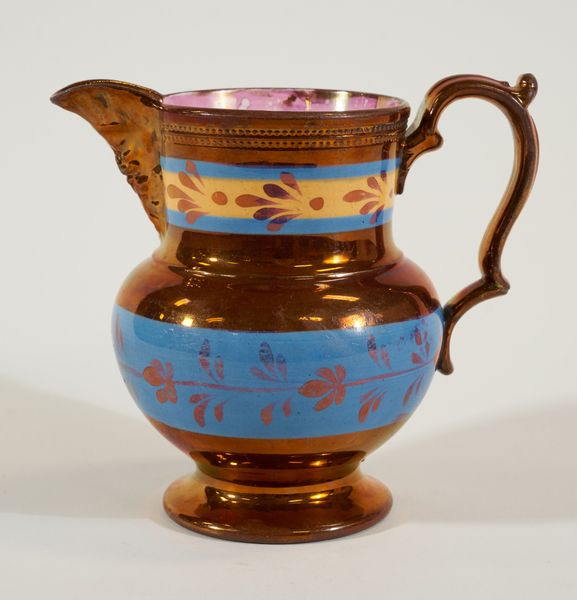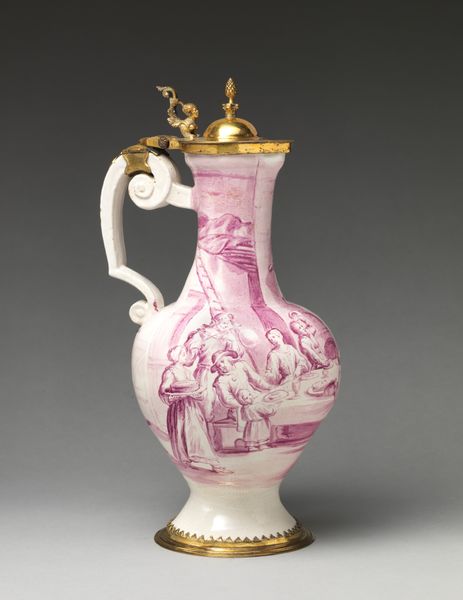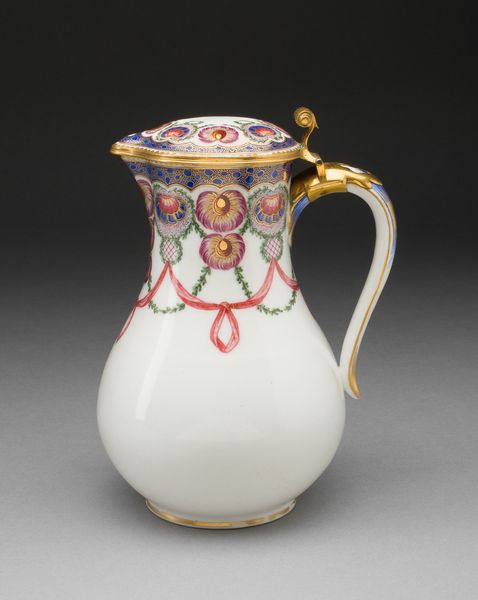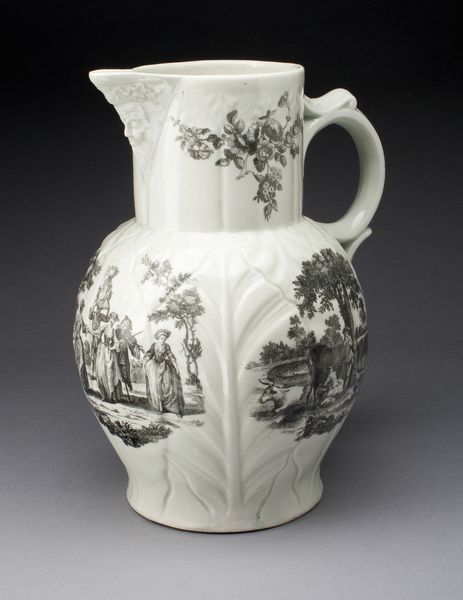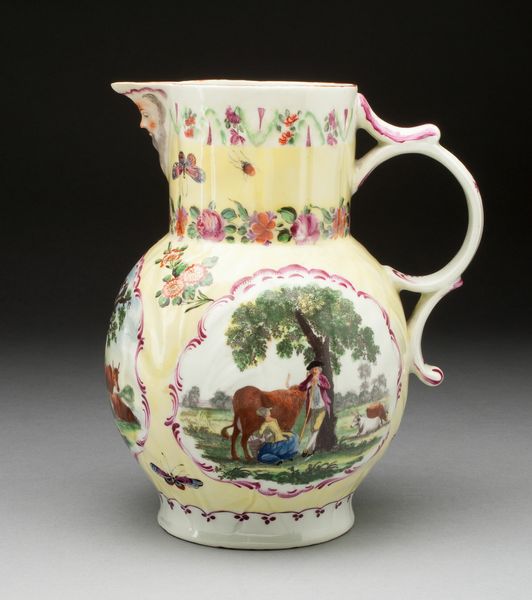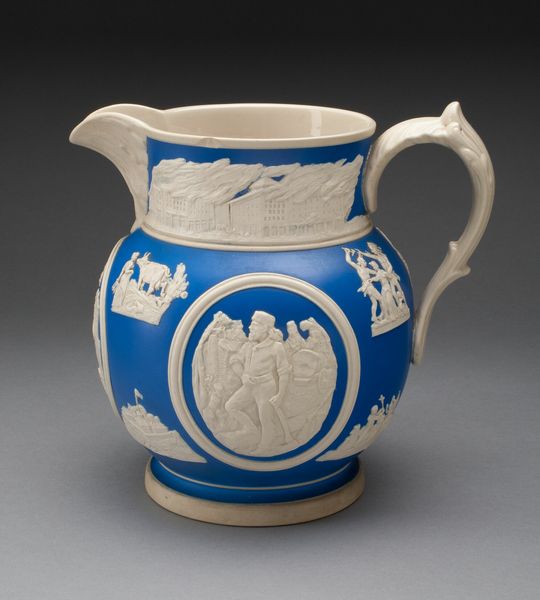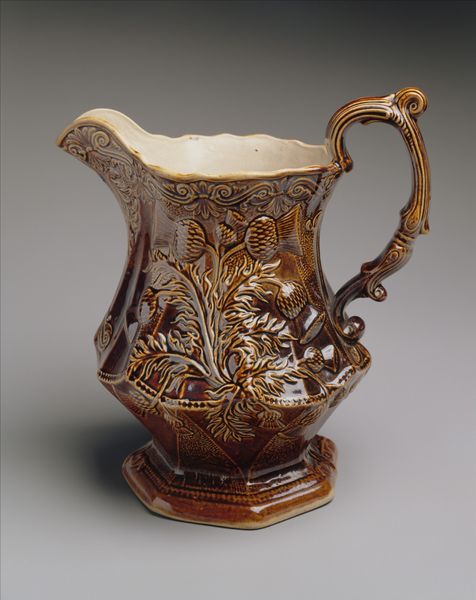
painting, porcelain, sculpture
#
painting
#
asian-art
#
bird
#
porcelain
#
sculpture
#
history-painting
#
decorative-art
#
rococo
Dimensions: H. with cover 8-1/8 in. (20.6 cm.)
Copyright: Public Domain
Curator: Look at this beautiful Coffeepot, crafted between 1723 and 1726 by the Meissen Manufactory. It's currently housed at the Metropolitan Museum of Art. Editor: Wow, it's surprisingly ornate! Almost like a piece of sculptural painting, the porcelain serving as the canvas. It definitely evokes a sense of luxury, maybe even indulgence. Curator: Indeed. We should note that it's part of a larger service, so it would have been part of an entire set of similar pieces, all working together. Considering the context of its creation, the piece reflects the rise of porcelain manufacturing in Europe, mimicking the coveted Asian imports. The very labor involved speaks volumes about trade routes, material sourcing, and the sheer craftsmanship required for porcelain production at the time. Editor: Absolutely. And you see how the style borrows heavily from Asian art traditions. The central painted scene, with those figures under the palm trees, along with the birds in flight--that’s all deliberately designed to tap into the European fascination with an imagined "Orient." You almost get a sense of how colonizers interpreted "the other." What story do we impose on people by romanticizing or exoticizing them like this? Curator: That's a compelling perspective. The very consumption of beverages like coffee, which fueled European capitalism, is tied to histories of labor and colonial exploitation. Meissen was at the forefront, attempting to replicate high value Asian porcelain production through mining their own materials and setting up factory production for distribution within aristocratic social spheres. The function of the Coffeepot is directly correlated to a shift in socio-economic standards. Editor: And let’s look closely at that painted scene again: we can ask ourselves how gender, race, and power dynamics manifest in this image? What specific narratives are encouraged by this artistic choice, how does it mirror the orientalism that shaped so many unequal power relations, and whose story is being told-- or more critically, omitted? Curator: It's true; the painted vignettes serve as social records. In viewing and understanding it with this complexity, we realize that even an object meant for something as innocuous as serving coffee can reveal far-reaching issues of colonialism and the representation of other cultures, becoming less of an individual decorative object. Editor: I appreciate the multi-layered complexities inherent in decorative arts from this era. Pieces such as this Coffeepot provide us space to discuss critical aspects of material culture. Curator: Agreed. Examining this Coffeepot has provided insights into its artistry and the historical systems and means of its making.
Comments
No comments
Be the first to comment and join the conversation on the ultimate creative platform.
